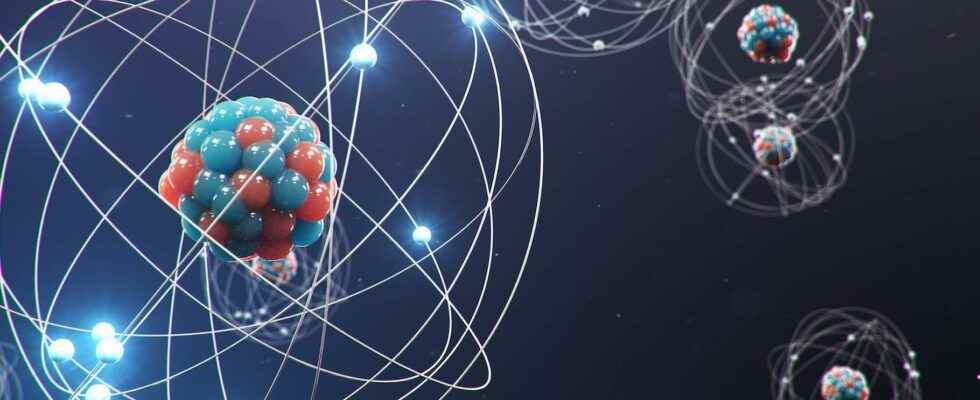The term nucleon – which comes from the Latin “nuclei” meaning ” core “ – is used to evoke, in a generic way and without distinction, one of the two kinds of particles which constitute the nucleus of an atom. So the protonsbut also the neutronsare they nucleons – that the physicists have long been regarded as elementary particles.
But they now know, and since the end of the 1960s, that nucleons are composed of smaller particles, quarks. Strongly linked by gluons, vectors of what the researchers call the strong interaction. Nucleons thus belong to the family of hadrons. As protons and neutrons each contain three quarks, nucleons are also to be classified in the subfamily of baryons.
In reality, we also find in the nucleons, a certain number of pairs of quarks and antiquarks. They are formed by conversion of gluons. And then annihilate to give back gluons.
Charge, mass, size: the characteristics of nucleons
It should also be noted that protons and neutrons do not carry the same electric charge. The proton, in fact, is made up of two quarks up – of charge +2/3 of the charge of a electron – and a quark down – of charge -1/3 of the charge of an electron. This gives it a positive charge equal to that of the electron. The neutron, as its name suggests, is electrically neutral. Because it is made up of two down quarks and a single up quark.
Another difference between proton and neutron : the first is stable – sa duration of life is of the order of 1030 years – the second can be considered stable in the heart of the atomic nucleus. Otherwise, its lifetime is of the order of 15 minutes.
The size of a nucleon is about 10-15 metre. Or of the order of a femtometer. A millionth of a millionth of a millimeter! The mass of a nucleon is, for its part, of the order of 10-27 kilogram. A thousandth of a billionth of a billionth of a milligram! It doesn’t seem like much, but it’s still about 2,000 times more than the mass of the electron, the other constituent of atoms. In fact, the mass of the nucleons of a atom usually arrives as a good approximation of atomic mass. This is why the number of nucleons per atom – denoted A, at the top left of the symbol of thechemical element corresponding – is qualified as ” mass number». And finally, the nucleons account for about 99.97% of the total mass of thematter .
You will also be interested
[EN VIDÉO] the atom The atom is a fundamental element of our reality, but do you really know it so well?
Interested in what you just read?
